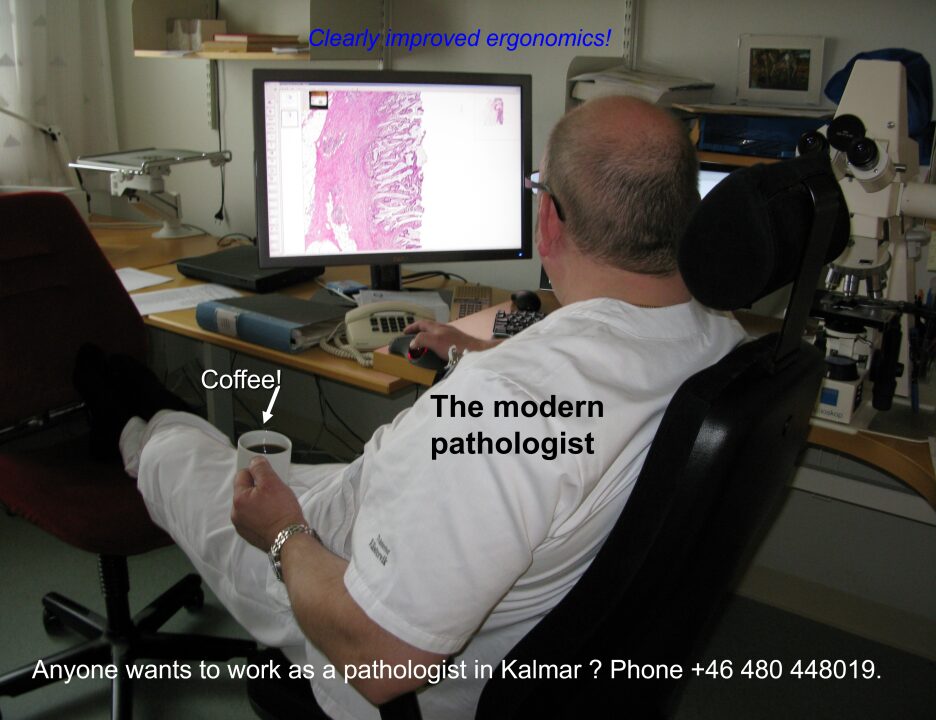There’s a Whole Lot of Clicking Goin’ On
 Unlike the song by a similar name,
Unlike the song by a similar name,
There’s not a whole lot of loving going on, in my heart
It’s a feeling, I’m feeling through and through
There’s not a whole lot of missing every time we’re apart
There’s not a whole lot of loving just for you
Many years ago I attended a lecture given by Dr. Sten Thorstenson from Kalmar, Sweden on their experience with digital pathology to date. This was perhaps 8 years ago or so. The PowerPoint lecture from which this image was provided is available online. Like any good presentation, it started out with what was the problem, why did the problem exist, what solution(s) were deployed to solve it and what problems did the solution(s) solve, or create. Ergonomics was a key reason why they looked at digital. The result, at that time, was more than 60000 slides scanned with 24 hour scanning and a recognition that more than 75% of the histopathology could be done off the monitor. The image with the pathologist feet up on a chair drinking coffee reading cases intrigued me.
Many years later, I attended another lecture, perhaps in London in 2019 and the speaker, who gave a theoretical/hypothetical talk about the future made the statement “With digital pathology and clinically validated AI algorithms, we will use our eyes more and our hands less.” This also intrigued me. It fit with the feet up and coffee cup model. I don’t drink coffee but realize I am in the minority.
Five years later, having had 8 months work of practicing pathology with whole slide images, early days of AI algorithms, voice recognition, disparate LIS systems between hospital and core laboratory and some work requiring the microscope, I can conclude there’s a whole lot of clicking goin’ on. There are more buttons, switches, levers and mouse clicks than ever before.
It reminds me of Microsoft Flight Simulator 2000 when I would try to fly the Cessna from Meigs Field to O’Hare in high winds and my Windows 7 or XP or Vista or Windows 2000 machine wouldn’t cooperate. I was pulling levers, filliping switches and pushing buttons to communicate with air traffic control and the like.
There is launching the case, navigating the image, picking the appropriate LIS, driving the microscope, and turning the voice recognition on and off so as to not transcribe a conversation, phone call or lunch order. All the while not saying anything that even resembles “alex”, “alexa” or “siri”. Three monitors are the minimum and five would not be excessive. You do use your eyes more and your fingers more. The mouse and keyboard have never seen so many clicks in a profession that is made up of expert mouse click counters.
Still, it’s better than the MUMPS based LIS, rudimentary email system, microcassette recorders, piles of working drafts and rotary phones of my residency.
It is perhaps slightly more ergonomic than being perched over a microscope precariously balanced on a dermatopathology and hematopathology textbook.
This too will improve over time. In a few years we will look back on this as primitive workflow. At one time radiologists complained about loading films on the whiteboard and having to stand up to change them. Now all they complain about it the speed of their cine viewers and roller mice and the extra few seconds it may take to load an increasingly large file from time to time.
Before long, slide emulators, eye movements, voice commands and thumb sweeps will replace what we know today.

































